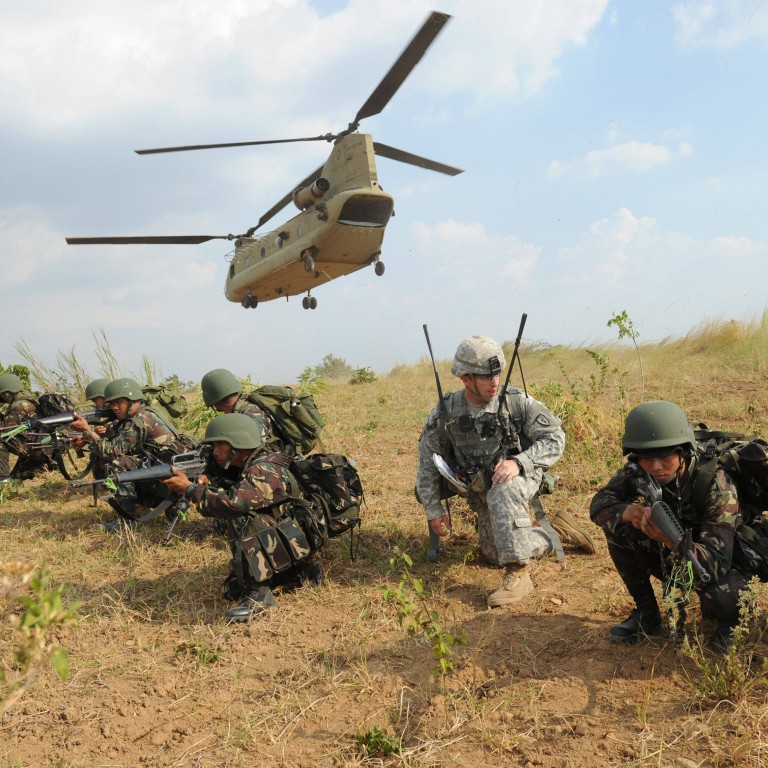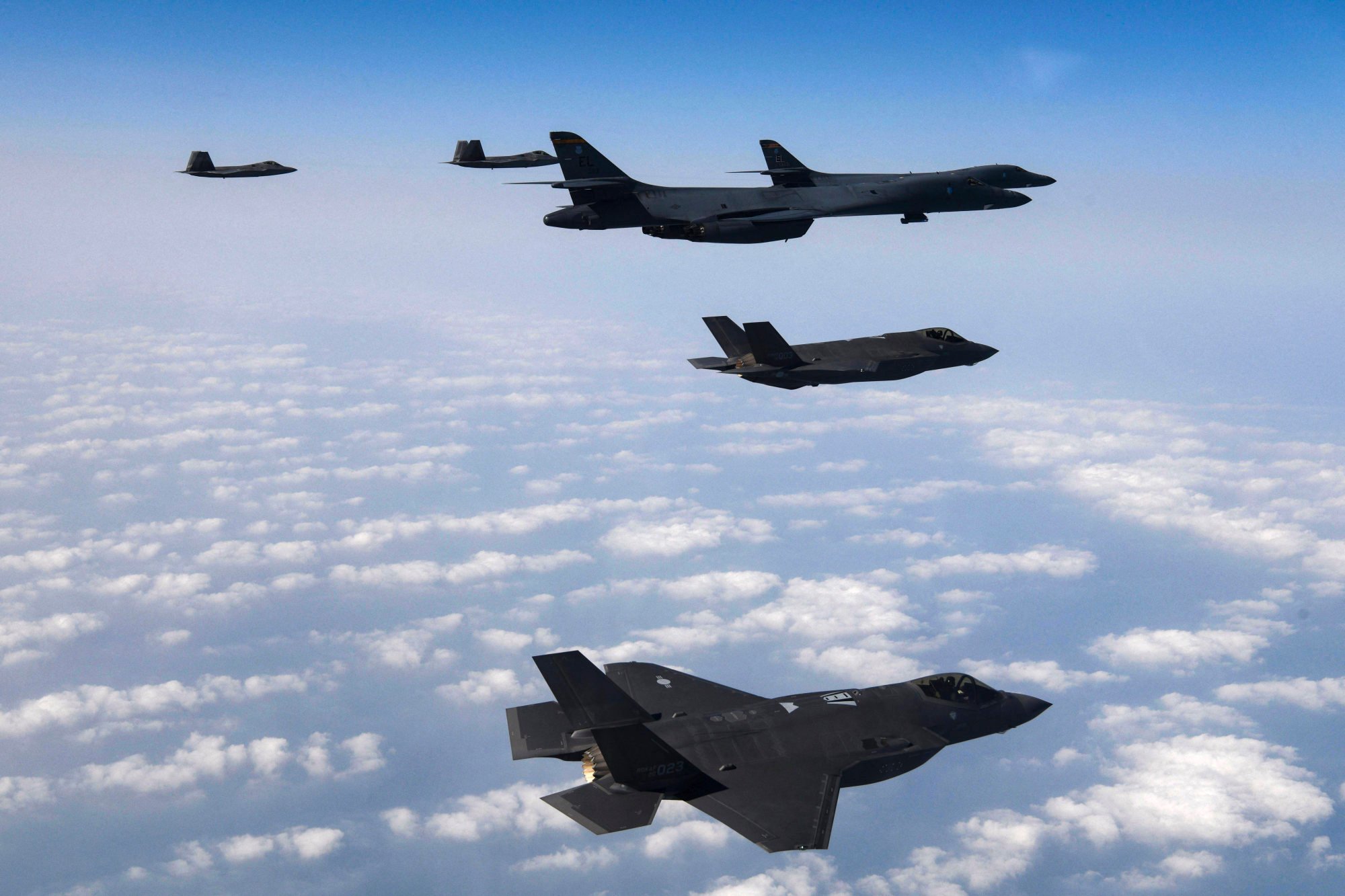
US-Philippines military bases deal seen as reaction to China’s moves in South China Sea over past decade
- Agreement gives US forces access to four new bases in the Southeast Asian nation
- US defence secretary says China is continuing to advance its ‘illegitimate claims’
The United States is boosting its military presence across Asia, with more troops and assets to be deployed to counter Beijing.
In a breakthrough on Thursday, the US and the Philippines agreed that the US would have access to four new bases in the Southeast Asian nation, adding to the five the US could already use to train servicemen and position equipment under a bilateral defence cooperation pact signed in 2014.
The locations of the four bases have not been specified, but previous reports suggested the Biden administration would like to have at least two in the north of Luzon Island, roughly 800km (500 miles) south of Taiwan.
Liu Weidong, a Sino-US affairs expert at the Chinese Academy of Social Sciences, said the deal would hamper China’s defences within the first island chain, “and this is also for the US to get better prepared for possible conflicts in the Taiwan Strait”.
Is US-Philippines military base deal a big threat to China?
The first island chain plays an important role for both the US and China, as Chinese forces have to pass through it to access the wider Pacific. Over the years, Beijing has built up military facilities and deployments inside the chain, triggering concerns among its neighbours.
Raymond Kuo, a political scientist and expert on East Asian security at the Rand Corporation, a US think tank, said the bases deal was part of a regional response to China’s actions in the past decade.
“Expanded US access to Philippine bases pushes back against both these strategies. Washington can now better support operations upholding the maritime order, as well as Taiwan’s defence.”

Malcolm Davis, a senior analyst at the Australian Strategic Policy Institute, said the agreement would strengthen the cordial relationship between the US and the Philippines at the expense of China’s ambitions to have a dominant presence and influence.
He said there had been a great deal of resistance to the US presence in the Philippines following the fall of the Marcos regime in 1986, and that had intensified under the government of Rodrigo Duterte from 2016 to last year.
“The election of [Ferdinand] Marcos Jnr – Bong Bong – opens up a new opportunity for the US to strengthen its ability to operate from the Philippines as Bongbong is much more aligned to the US than Duterte, who tried to align the Philippines to Beijing,” Davis said.
Philippines’ Marcos Jnr says South China Sea ‘keeps him up at night’
Announcing the pact with the Philippines, Austin said boosting the defence alliance was needed as China “continues to advance its illegitimate claims in the West Philippine Sea” – the name the Philippines uses when referring to the South China Sea, which is the subject of territorial disputes between China and its Southeast Asian neighbours.
China has built up facilities such as air fields on islands in the disputed waters, triggering rebukes from Washington. Beijing has accused the US of provoking regional tensions with its deployment of military aircraft and vessels.
Washington’s security engagement goes beyond the Philippines. Austin met his South Korean counterpart Lee Jong-sup on Tuesday, when they reaffirmed their alliance’s joint commitment to respond to North Korea’s growing missile threats.
As Nato chief visits South Korea and Japan, China will be high on agenda
They said the US would increase its deployment of advanced military assets to the Korean peninsula, including fighter jets and aircraft carriers, to boost joint training and planning. The two nations would also expand their combined military exercises, including more live-fire drills.
The US is also actively enhancing military ties with Japan, with a Marine Corps rapid reaction unit to be set up in Okinawa to help defend remote islands in southwestern Japan.

Japan agreed last year to the construction of a base on an uninhabited island in southern Japan to be used as a practice site for US carrier-borne fighters.
Kuo said countries in the region were strengthening their bilateral defence relations with the US and taking part in reinvigorated multilateral mechanisms like the Quadrilateral Security Dialogue between Australia, India, Japan and the United States.
“This will assure regional countries and allow them greater political ability to push back against certain Chinese actions, like maritime coercion,” he said. “Ideally, these initiatives will foster closer political, diplomatic and defence coordination region-wide, something that East and Southeast Asia has lacked yet sorely needs.”
North Korea says US drills threaten to turn region into a ‘huge war arsenal’
Such a front is expected to anger Beijing, which is assertively boosting its presence in the South China Sea and routinely dispatches warplanes to Taiwan’s air defence identification zone.
The foreign ministry in Beijing said the defence agreement escalated regional tensions and asked the Philippines to avoid being “taken advantage of” by the US.
Liu said it was time for China to think of a long-term plan to see how to counter the increasingly close military ties between the US and other Asian countries.
“At present, it’s uncertain how the military cooperation between the US and the Philippines will be implemented, and whether China’s operations in the South China Sea would be affected … but in such a situation, China has to plan strategically ahead and see how to protect the country’s long-term interests,” he said.
Kuo said China was still the biggest trade partner for many countries, and Washington had not provided a sufficiently robust economic programme to give them an alternative.
“Beijing can still rely upon trade and development to manage its relations, although its internal economic challenges are increasingly eroding that advantage,” he said.



